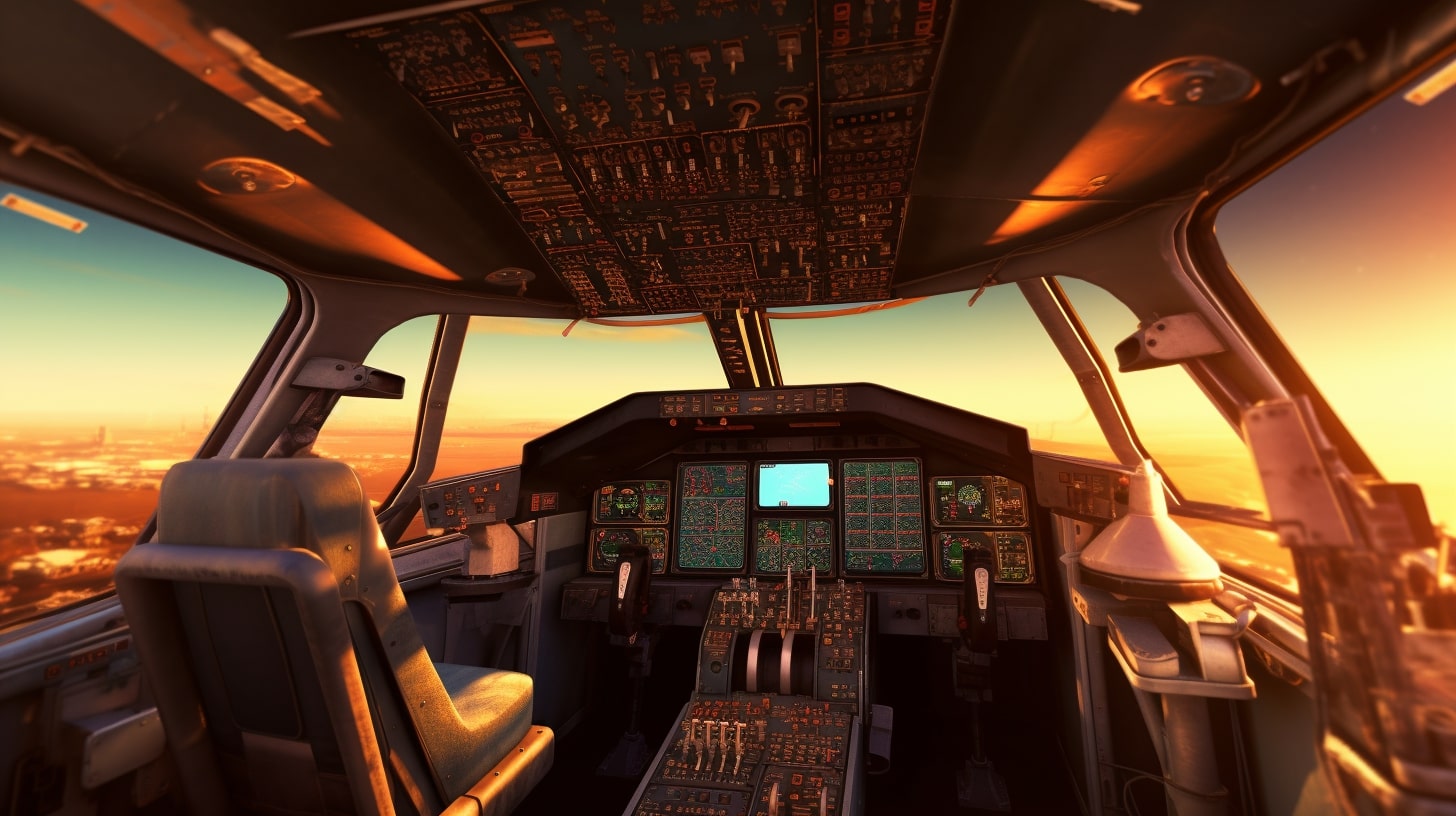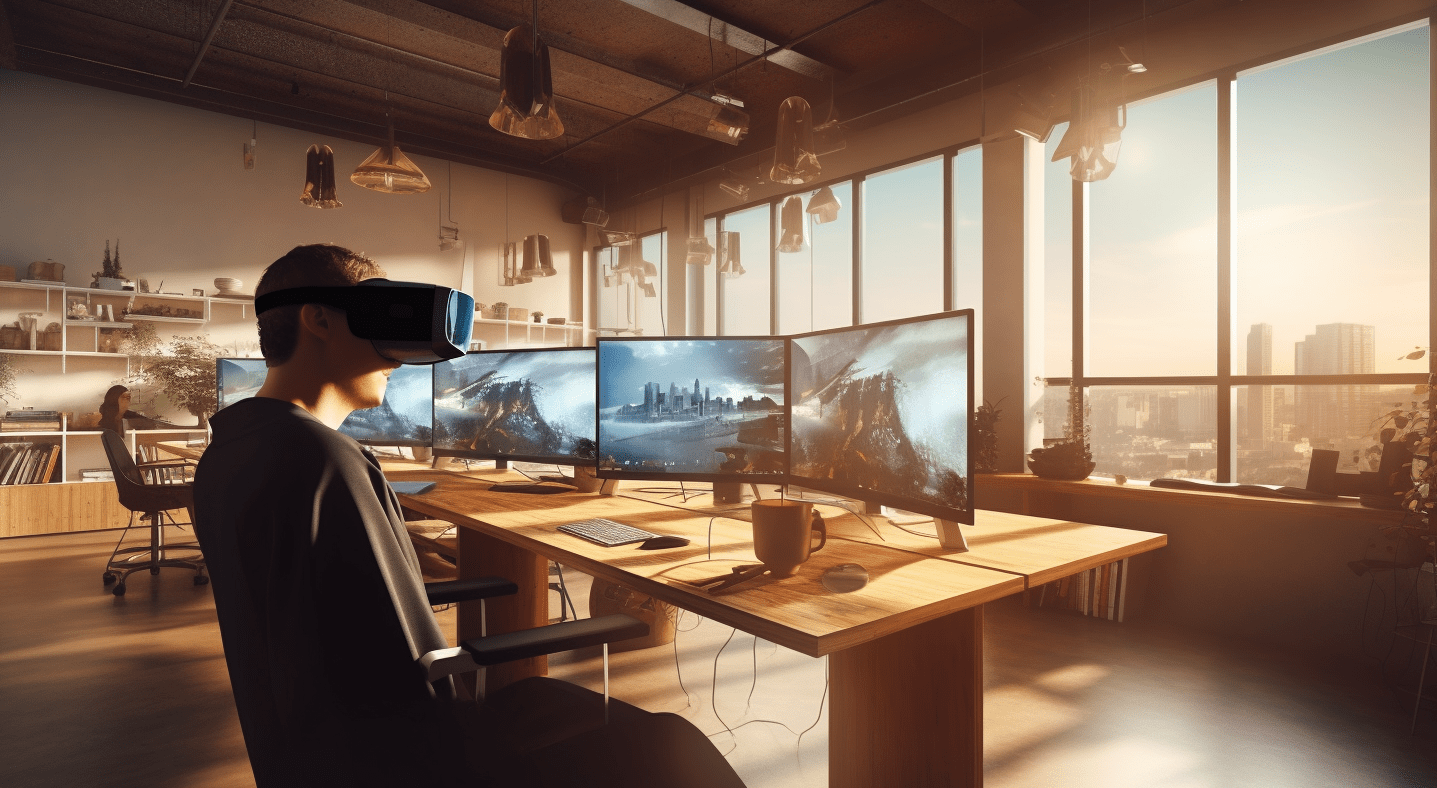Virtual Reality (VR) technology has become increasingly popular in recent years, with applications ranging from entertainment to education, and even healthcare.
One of the industries where Virtual Reality has the potential to revolutionize is aviation. In this blog, we will explore how VR is being used in the aviation industry and its potential impact.

Applications:-
One of the most significant applications of VR in aviation is in training. VR can provide pilots with a realistic simulation of flight conditions, allowing them to practice in a safe and controlled environment.
This technology allows pilots to experience a range of scenarios that may be difficult or impossible to simulate in real life, such as emergency situations or extreme weather conditions.

Moreover, VR training can also help reduce costs associated with traditional training methods, such as fuel expenses, aircraft maintenance, and instructor fees.
This technology can also reduce the amount of time required for pilot training, as well as providing a more immersive and engaging learning experience.
In addition to pilot training, VR can also be used for cabin crew training. For example, cabin crew can use VR to simulate emergency scenarios such as fires, evacuations, and medical emergencies, allowing them to practice and improve their response times.
Another application of VR in aviation is for aircraft design and maintenance. Engineers and designers can use VR to create and test new aircraft designs, allowing them to identify any potential issues before the actual aircraft is built.
VR can also be used to simulate maintenance tasks, allowing technicians to practice and improve their skills before working on actual aircraft.

Furthermore, VR can also be used for passenger entertainment and experience. Airlines can offer VR entertainment systems to their passengers, allowing them to watch movies or play games in an immersive 360-degree environment.
VR can also be used to create virtual tours of destinations or attractions, providing passengers with a unique and engaging experience.
Virtual reality training is not just for pilots in the aviation sector. Since the cabin crew is essential to the efficient functioning of all aircraft, training them can also be done using virtual reality.
As opposed to what we used to call them, they are no longer air hostesses. The cabin crew has a variety of operational, security, safety, and emergency responsibilities.
Wow, people really want Rifts. There must be a lot of lurkers in the VR community.
LUCKY PALMER Tweet
Challenges:-
However, the use of VR in aviation is not without its challenges. One of the biggest challenges is the cost of implementing VR technology.
VR systems can be expensive, and it may take time to recoup the initial investment. Another challenge is the need for high-quality VR content. Creating realistic and engaging VR simulations requires significant resources and expertise.
Without high-quality content, VR simulations may not be effective in training or entertainment.

At the moment, VR is really about lessons learned. It's in an exciting (and frightening) experimentation stage, something that might not be perfect during the first go-around but should still be invested in. This is the way we will start breaking new ground and challenging the norms.
RESH SIDHU Tweet
Conclusion:-
In conclusion, VR has the potential to revolutionize the aviation industry. From pilot training to aircraft design, maintenance, and passenger experience, VR can provide a range of benefits to the industry.
However, the challenges associated with implementing VR technology must be carefully considered, and efforts must be made to create high-quality Virtual Reality content that meets the industry’s needs.
With careful planning and implementation, VR can help the aviation industry become safer, more efficient, and more enjoyable for everyone involved.










